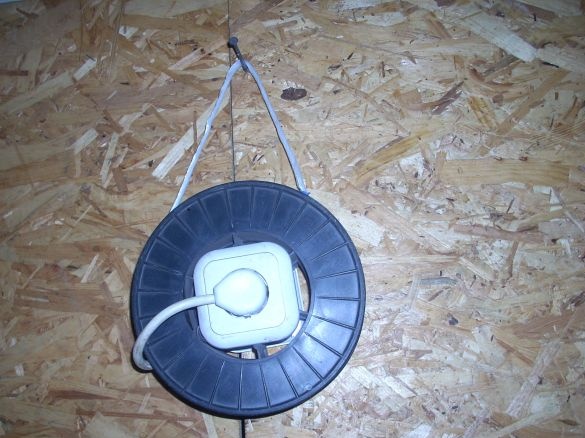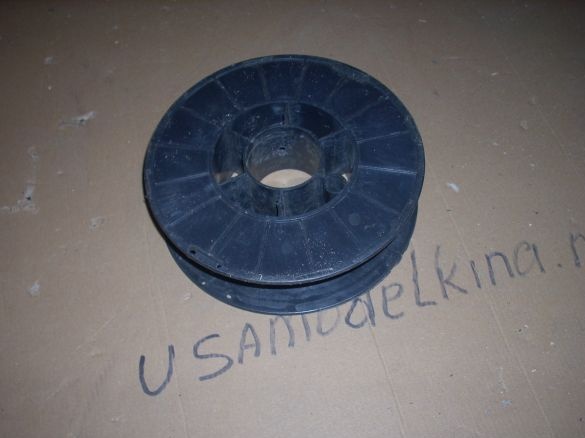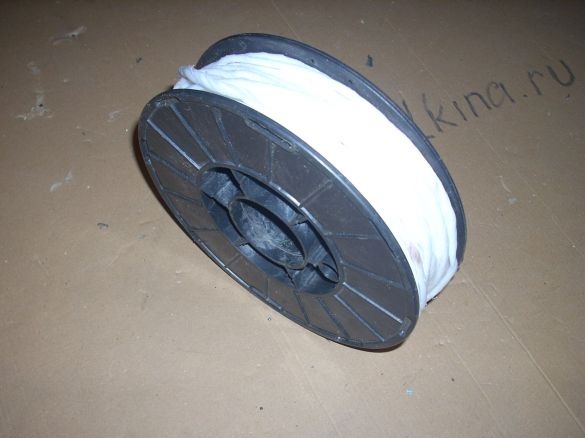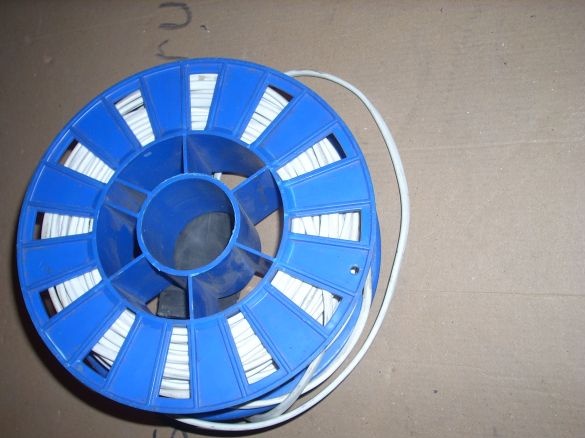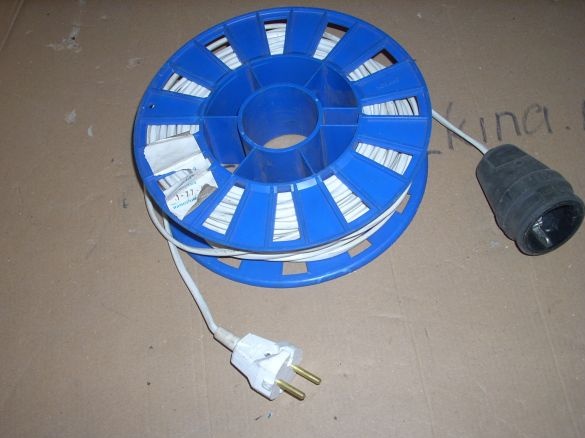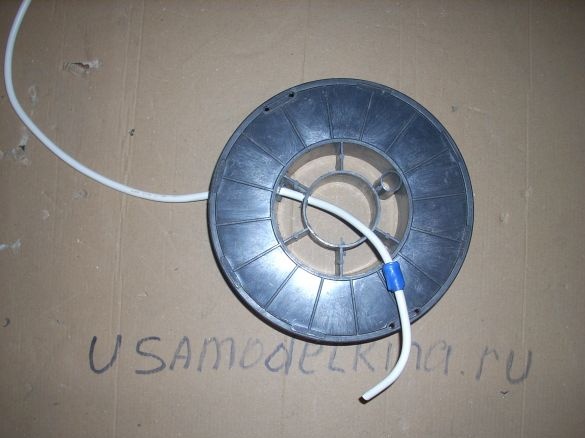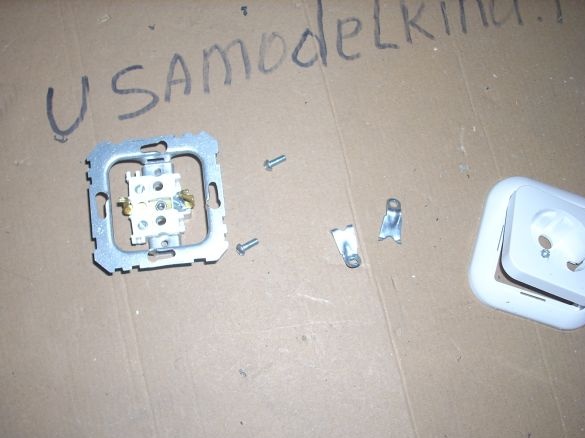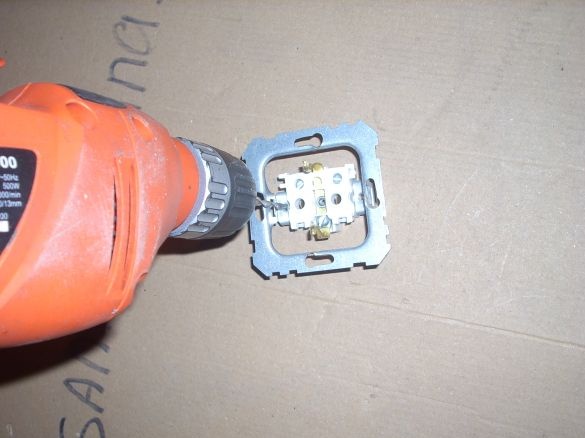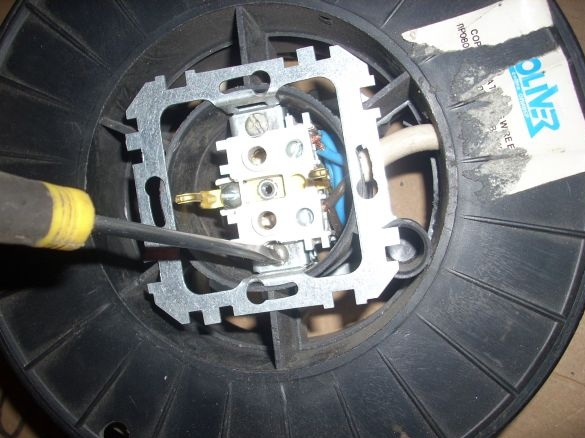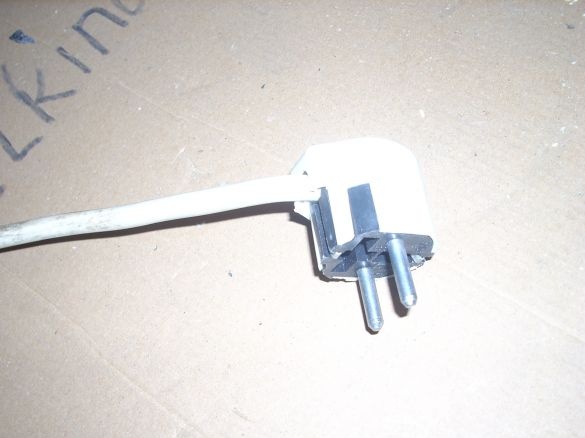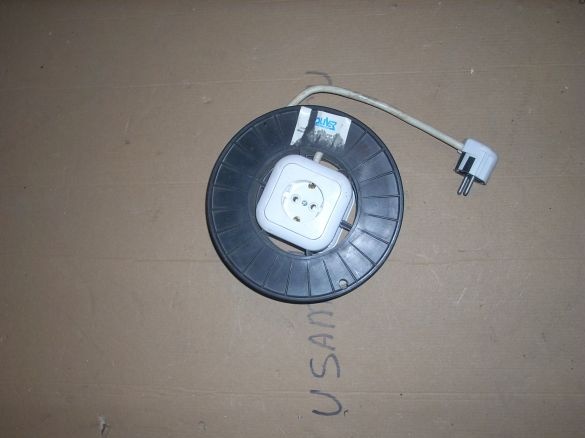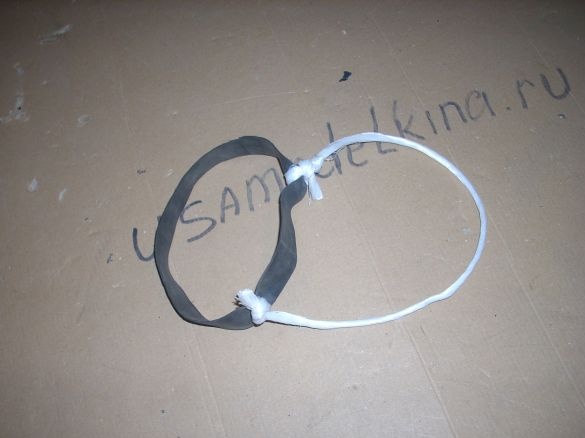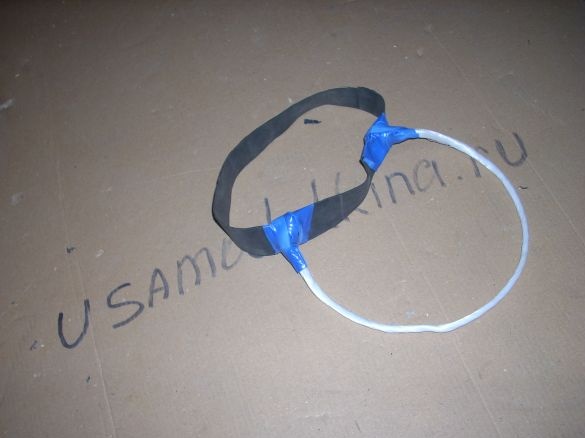You can, of course, just use the coil as an organizer - in order to wrap an extension cord on it during storage and transportation. For example, I did just that by making a light extension cord for relatively weak consumers - a jigsaw, a screwdriver, etc. In its manufacture, I used a ball screw ШВВП 2 at 0.75, and one socket. It is very convenient if I work with one tool, for example, on the roof - a light wire does not try to run down, dragging a tool along with it.
But more often there is a need to connect a more serious load (big grinder, chipper, electric welding) and at the same time work with several tools. For such consumers, firstly, a wire of a larger cross section and with stronger insulation is needed, and secondly, grounding. For this, the PVA 3 wire is suitable for 1. But it is much thicker and heavier. An extension cord, say, 50 meters long, is already a rather bulky design. And not always such a length is needed. Therefore, I decided to make several identical extension cords with a length of 20 m each. At the same time, bulky powerful sockets, so as not to hang out and break, put inside the coils.
So we need:
1. A coil from a welding wire.
2. PVA wire 3 to 1 (20 m)
3. Socket 16 A. single, with grounding, hidden installation. (2 pcs.)
4. Plug 16 A with grounding.
5. Two screws (M3, or M4. (Depends on the type of sockets.) 30 mm long).
6. Old car camera.
7. Cut of twine.
We drill a hole for the wire.
We skip the end of the wire into the hole and fix it. To do this, you can, for example, simply wrap a "hump" of adhesive tape, or electrical tape.Now, with a jerk, the wire will not break out of the outlet:
We take our sockets.
We disassemble.
They have two types of fastening: they can be fastened with screws to the outer frame, or with the help of expandable hooks. Neither method is suitable for us. We generally remove the hooks for internal fastening - they will only interfere with us.
In one outlet (only in one!) We drill a thread in the holes into which the bolts of the side hooks ejected by us were screwed.
We connect the sockets in parallel with each other, using short pieces of wire. We pass the wires through the central large hole of our coil so that the sockets remain on different sides of the coil. We connect the end of our wire, insert the sockets into the coil and tighten the screws together using the holes in which the screws of the side hooks were. We insert the screws into the socket in which we drilled the thread and screw it into another. . Sockets are tightly attracted to one another, resting against the outer frames. Replace the cover. We wrap the cable around the reel. At the end of the cable we attach the plug.
Our extension cord is ready:
From the old car camera we cut out a ring:
Tie a piece of twine to it like this: To prevent unleashing, wrap with electrical tape: You can’t do this, but I took a “bale” twine, which I would definitely unleash.
We put an elastic band on our extension cord. She will fix the end of the wire with the plug and prevent it from unwinding. And for the loop of twine it is convenient to carry it, or hang it on the wall for storage. For ease of carrying, you can put a piece of tube on the loop - you get a convenient handle. But I didn’t.
I made five of these extensions. If necessary, I can stretch them to 100 meters. And without such a need, I do not need to drag and unwind the extra wire.
If you do not have a semiautomatic device, it does not matter! Such coils can always be dialed for free, or “for beer” in car service centers involved in bodywork, or repair of silencers, as well as in companies working with metal structures. They throw them a few a day.
And lastly ... When working with an extension cord, always unwind it completely! Even if this is not necessary. It is better to throw it with a shapeless bunch than to have a coil with an inductance in the circuit, which will take power from us, and at the same time heat up very much. When working with a welding machine, the most common "death" of extension cords is precisely their burning due to the fact that they were not completely unwound ...


